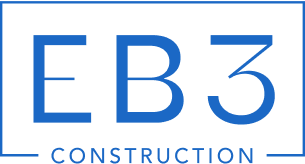When projects demand different risk structures, we face a fundamental choice between Construction Manager at Risk (CMAR) and Construction Manager as Agent (CMA). The core difference lies in who bears financial responsibility and holds the contracts.
In CMAR, we serve as both consultant and contractor, holding all subcontracts while providing a Guaranteed Maximum Price that caps the owner’s exposure. If costs exceed that GMP, we absorb the overage. In CMA, we function purely as advisors while the owner maintains direct prime contracts with each trade and assumes all cost risk without a price guarantee. This comparison will examine how these contract structures shape project delivery, risk allocation, and team coordination.
How Do Roles, Contracts, And Risk Allocation Differ Between CMAR And CMA?

The contract structures in CMAR and CMA create fundamentally different working relationships. In CMAR, we operate under a single prime contract with the owner and hold all subcontracts directly. This gives us complete control over scheduling, coordination, and enforcement with trade partners. CMA flips this arrangement entirely—the owner maintains multiple prime contracts with each trade contractor while we serve only in an advisory role under our own separate contract.
Risk allocation represents the clearest distinction between these delivery methods. CMAR requires us to provide a Guaranteed Maximum Price that caps the owner’s financial exposure. If construction costs exceed our GMP, we absorb those overruns, not the owner. CMA operates without any price guarantee—the owner bears full responsibility for cost overruns and unforeseen conditions.
Our enforcement authority differs dramatically between the two approaches. Under CMAR contracts, we can directly address scheduling delays, quality issues, or coordination problems with subcontractors because we hold their contracts. With CMA, any contract enforcement actions must flow through the owner since they hold the prime contracts with each trade.
Cost Transparency And Financial Controls
CMAR projects typically use open-book pricing that gives owners complete visibility into our costs, markups, and profit margins. We include contingency funds within the GMP to handle scope clarifications, minor changes, and construction coordination issues. When projects come in under the GMP, contract terms determine whether savings are shared between owner and CM/GC or retained entirely by the owner.
CMA arrangements focus on cost transparency through regular reporting and budget tracking, but without the financial protection of a guaranteed maximum price. We provide nonbinding estimates and ongoing cost projections, but these serve as planning tools rather than contractual commitments.
Scheduling And Coordination Differences
CMAR enables us to phase bid packages and begin early work packages like sitework or foundations while design development continues on other building components. This sequencing can accelerate overall project delivery by overlapping design and construction activities. Our direct contract relationships with subcontractors allow immediate coordination and problem-solving.
Under CMA, our role centers on schedule coordination, constructability review, and advisory services rather than direct execution control. We provide value engineering recommendations and monitor progress, but the owner must implement any corrective actions through their multiple prime contracts. This structure requires more owner involvement in day-to-day construction management decisions.
When Is CMAR The Better Fit For Construction Teams?
CMAR works best for complex private projects where cost certainty matters more than flexibility. When we encounter large-scale developments, multi-story builds, or technically challenging projects, the guaranteed maximum price structure gives owners a fixed ceiling on construction costs. This approach suits developers who need budget predictability for financing and stakeholders who want professional oversight without managing multiple contracts directly.
We position ourselves as the owner advocate throughout the entire project lifecycle. From early design phases through final closeout, we provide regular cost estimates at predetermined milestones, manage all subcontractor bids, and coordinate work sequences. This single point of contact streamlines communication and decision-making processes that can bog down other delivery methods.
The phased bidding capability accelerates project schedules significantly. We can break larger projects into bid packages and start sitework or foundation phases while architectural teams finalize upper-level details. This parallel processing approach reduces overall project duration compared to traditional design-bid-build sequences where all documents must be complete before any construction begins.
Transparency comes through open-book pricing structures built into most CMAR contracts. Owners see actual material costs, labor rates, and markup details rather than lump-sum proposals. Contingency funds within the GMP handle scope gaps and unforeseen conditions, with unused portions typically returning to the owner per contract terms.
However, CMAR success depends entirely on selecting an experienced construction manager. We become the single point of failure if our expertise proves insufficient or our communication breaks down. Owners must evaluate track records on similar project types and verify our capabilities in cost estimation, scheduling, and subcontractor management before commitment.
Public sector limitations vary significantly by state regulations. Some jurisdictions restrict CMAR use for government projects, requiring traditional low-bid procurement methods instead. Municipal and institutional owners should verify local procurement laws before pursuing this delivery method, as recent changes to Iowa’s bidding laws now allow public entities to use CMAR with specific stipulations.
When Is Agent Construction Management (CMA) The Better Fit?
Agent construction management works best when owners want professional oversight while maintaining direct contractual relationships with trade partners. We often see this model chosen for projects where owners prefer to hold multiple prime contracts rather than one unified agreement with a general contractor. The CM serves as the owner’s representative and coordinator, but cannot perform construction work or hold subcontractor agreements.
Public projects frequently use CMA delivery when state regulations or procurement laws restrict CMAR approaches. Many educational institutions, municipal entities, and government agencies find CMA aligns with their procurement requirements. For example, some states require public entities to maintain direct contracts with trade partners, making CMA the only viable construction management option.
The CM provides comprehensive advisory services throughout the project lifecycle. These include scheduling coordination across multiple prime contractors, constructability reviews during design development, and nonbinding cost estimates to guide budget decisions. Value engineering input helps owners optimize their investment by identifying cost-effective alternatives and design refinements. The CM also handles project documentation, progress observation, and communication between all parties.
However, owners must understand they carry significantly more risk without a Guaranteed Maximum Price. When unexpected conditions arise or costs escalate, the owner absorbs these expenses rather than transferring risk to the CM. Direct contract enforcement becomes the owner’s responsibility, requiring them to manage disputes, scheduling conflicts, and coordination issues across multiple prime contractors.
CMA fees can offset perceived savings from competitive bidding among multiple prime contractors. While breaking work into smaller trade packages may increase competition, the additional coordination and management costs often neutralize initial savings. Owners must weigh these factors against their desire for direct contract control and procurement flexibility.
Selection typically follows a qualifications-based approach rather than competitive bidding. Owners evaluate CMs based on experience, track record, and team capabilities rather than lowest price. This method allows focus on finding the right management partner for the project’s specific needs and complexity.
Early engagement during design phases yields the most value from CMA services. When we join projects during schematic design, our constructability input can prevent costly design modifications later. Early cost estimates help owners make informed decisions about scope and budget allocation before designs become too refined to modify economically.
Conclusion And Decision Checklist

CMAR provides cost certainty through a Guaranteed Maximum Price and single-point coordination, making it ideal for complex private projects requiring transparency and accelerated delivery through phased construction. CMA delivers advisory services while preserving direct owner control over prime contracts, suitable for public projects with regulatory constraints or owners who prefer hands-on contract management despite accepting higher risk.
The selection process differs significantly between methods. CMAR typically follows a best value two-step process involving qualifications review followed by technical and price proposals, allowing evaluation of both capability and cost. CMA selection relies on qualifications-based evaluation, focusing on expertise rather than pricing since the CM provides advisory services without construction risk. Confirm state and agency procurement rules early, as some jurisdictions limit CMAR availability for public projects. Define risk tolerance levels and control preferences upfront to guide method selection. Establish clear contingency use protocols, savings sharing arrangements, and communication frameworks in contracts regardless of chosen delivery method.
We help developers and property owners navigate these decisions through comprehensive pre-construction planning that aligns delivery methods with project goals. Contact us to discuss which approach best fits your construction objectives.




